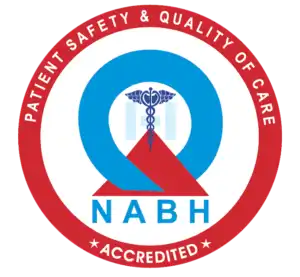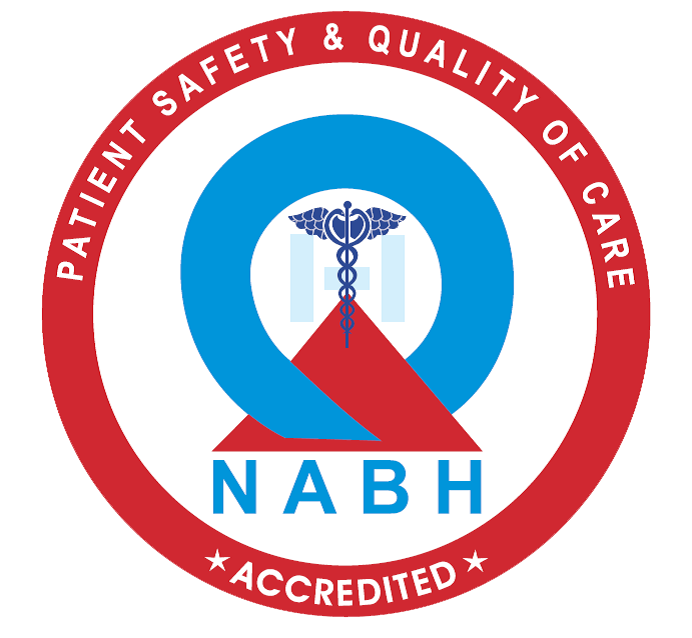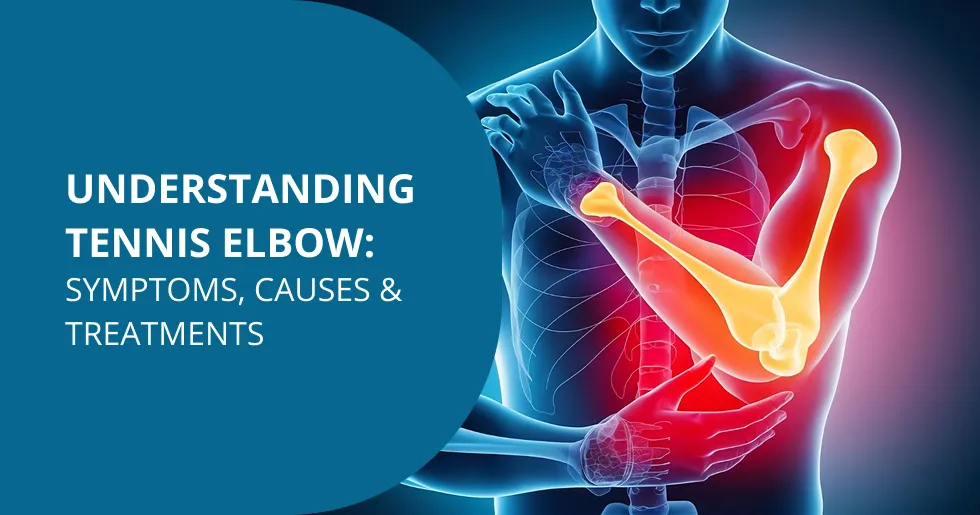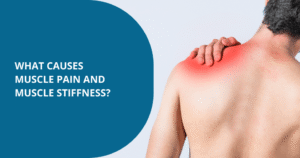Living with constant elbow pain can be frustrating.
A nagging pain on the outside of the elbow that makes simple tasks like lifting a coffee cup or shaking hands feel impossible, right? When it starts with a dull ache often turns into sharp discomfort that affects simple activities.
This common condition is known as Tennis Elbow. Despite its name who get tennis elbow don’t play tennis, and it is not only limited to athletes but also affects anyone who uses their arms in repetitive ways.
But it can be treated with the right diagnosis and a personalised care plan through advanced and non-surgical therapies.
At Epione Bangalore, patients find not just relief from pain but also a path to natural healing, regain strength, mobility, and confidence.
What is a Tennis Elbow? An Overview
Tennis elbow, also known as lateral epicondylitis, is a common condition where the tendons around the outside of the elbow become inflamed due to repeated motion of the wrist and arm.
It’s one of the common causes of elbow pain, especially in people who frequently use their arms for lifting, typing, or gripping activities, including painters, carpenters, mechanics, chefs, and even office workers who spend long hours typing.
When left untreated, tennis elbow disease can become a chronic condition that interferes with daily tasks like shaking hands, turning a doorknob, or holding a coffee cup.
Key Symptoms to Recognise Tennis Elbow Early
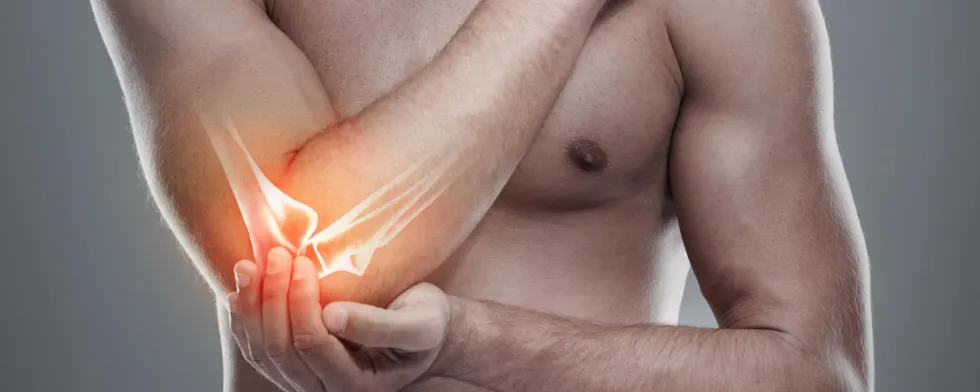
The pain of tennis elbow epicondylitis can travel from outside the elbow into the forearm and wrist. The most common symptom is pain or a burning sensation on the outer part of the elbow.
Other Key Symptoms:
- Pain and Tenderness – You might feel pain and tenderness in your elbow, extending to your forearm and wrist. The discomfort ranges from dull ache to sharp, burning sensation, often with stiffness.
- Weakened Grip – As the condition progresses, it might be challenging to perform everyday tasks, and you might notice impaired strength, making it difficult to hold objects or shake hands.
- Pain Straightening Arm – When straightening your arm, you might feel pain in your elbow, especially when the activities require you to extend your arm fully.
- Swelling Along Arm – Sometimes, you might notice swelling around the elbow joint, and pain may spread along your arm, causing discomfort during sleep or rest.
Causes of Tennis Elbow and Who is at Risk
The main causes of tennis elbow are repetitive movements and strains on the forearm muscles.
Further, using the wrong technique can make the power in a racquet swing rotate through the wrist. This causes movement in the wrist, elbow joint, or shoulder, increasing pressure on the tendon and leading to inflammation.
Individuals at a higher risk –
- Athletes: Tennis players, racquetball players, and golfers.
- Manual Labourers: Plumbers, painters, carpenters, assembly line workers, and butchers.
- Professionals with Repetitive Movements: Chefs, cooks, and even people who spend a lot of time using a computer mouse.
How Tennis Elbow is Diagnosed by Experts

Diagnosing tennis elbow typically involves a combination of a detailed medial history, a physical medical history, a physcial examination, which may include applying pressure to the affected area and asking you to move your elbow, wrist, and fingers.
In some cases, imaging tests like electromyography, MRI, and X-rays may be used to rule out other conditions and confirm the diagnosis.
Effective Treatment Options: From Home Care to Advanced Therapies

There is no one-size-fits-all cure for tennis elbow. Many cases can be managed with home care, including rest, applying ice, and modifying activities.
Here are some of the effective treatment options for Elbow Tennis –
- Home Care: It includes resting the elbow and avoiding repetitive strain, applying ice to reduce inflammation, and performing gentle stretching exercises.
- Physical Therapy: Specific exercises help to improve flexibility and strengthen muscles in your forearm and around your elbow.
- Platelet Rich Plasma: High concentrations of platelets taken from the patient’s blood are injected directly into the injured elbow to stimulate healing.
- Injections: Specialised injections can help reduce inflammation and promote healing at the source of the pain.
Why Choose Epione Bangalore for Personalised, Non-Surgical Treatment
Epione Bangalore stands apart because of its non-surgical, personalised tennis elbow pain therapy approach. Instead of masking symptoms, doctors focus on addressing the root cause of pain.
Epione has treated over 6000+ chronic pain cases successfully. We offer advanced regenerative treatments for all chronic pain conditions under one roof.
If pain persists despite home remedies or if it interferes with daily life, it’s time to see a pain management expert. At Epione Bengaluru, patients find not just treatment but also guidance for long-term elbow health.
Take the Next Step: Expert Care for Tennis Elbow at Epione Bangalore
Don’t let tennis elbow limit your life. The advanced, non-surgical tennis elbow treatment options at Epione Bangalore help relieve pain, restore mobility, and get you back to your daily activities.
Whether you’re an athlete, a professional, or simply struggling with everyday tasks, our experts at Epione offer personalised solutions designed for full recovery.
